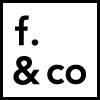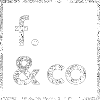14. Method
Let’s assume for a moment that God created the Universe and all that’s in it in the span of about a week. If there was nothing before and then everything, then there was a genuine act of Creation. And God had to be creative, since his endeavour had never been undertaken before, as far as we know. The question that remains is: was the universe the lucky strike of an artist painting his first blank canvas (the story doesn’t say if he tried other things before painting “The Universe”) or the carefully planned work of an engineer or architect?
The first case would make God something of a creative genius or virtuoso. The other, a meticulous freak, planning every little detail. Truth (!) is, and teleologists would argue just that, he had to be both (and much more). But the fact of the matter is that, whether artist, engineer or “artisan”, God could not have achieved his feat without some kind of method.
Creativity is not some fancy schmancy, magical phenomenon that just “happens.” If you want to find a new solution to an old problem, make an existing solution just a tiny bit better, or come up with a brand new, blue ocean, idea, you need to put in the effort, and some method is in order. Einstein said it: God did not create the Universe by just rolling the dice.
Managing creativity, an oxymoron?
At the organization level, that means putting some processes in place that ensure the best use of resources in generating ideas (even really crazy ones), cultivating and nurturing them until some are ready to bloom. No business can afford to leave its capacity to renew itself, thus its future, to chance. Several tools and models have been developed to accompany the creative process in more or less systematic ways.
One of the most technical, and at first glance quite rebarbative, is called TRIZ, a method whose development started in the Soviet Union after the war. It is mostly popular with engineers, but when mastered, offers a powerful, systematic approach to problem-solving, even in less product-driven context, like service-design. Over the last decade, Samsung invested heavily in streamlining TRIZ in its innovation processes.
Another, more design-centric approach is provided by the C-K Theory, which was developed around the research of Armand Hatchuel and Benoît Weil. It aims to balance the organic way in which we can expand, almost playfully, on imaginary concepts (a flying boat), with the more systematic approach we have to knowledge and science. The theory suggests that it’s in the interplay between those two realms (C and K), that truly innovative design can emerge.
Designing the unknown | C-K Theory Presentation from CGS Mines ParisTech on Vimeo.
Even in the realm of business strategy, several methods have emerged to help break away from the ever more useless and paralysing mold of the traditional business plan. Eric Ries’ Lean Startup movement and Yves Pigneur’s Business Model Canvas both contribute to creatively redefining the way we do business today.
Business Model Canvas Explained from Business Model TV on YouTube.
None of us, be it in our personal, artistic or professional lives, face a creative challenge as daunting as that which God faced – What’s the value proposition for humankind?, he should have asked on the morning of the sixth day — but we all have to work from a number of different starting points to reach ends that are often unkown to us until we reach them. Without tools to systematize our approach, the journey of innovation is nothing but a shot in the dark. You may hit something, but you never know if or whether you will. Method, be it for the artist or the engineer, does not guarantee success, but it may at least help you learn from your failures. Method helps make it more about the journey, as individuals and organizations, than about the destination. So that we can all rest on the seventh day.
This text is part of a series written in the context of the Fifth edition of the Montreal-Barcelona Summer School on Management of Creativity, organized by Mosaic HEC Montréal and Universitat Barcelona, July 9 to 24, 2013.
Illustration by Studio 923a. Read all posts in the series at blog.fandco.ca/yulbcn.


